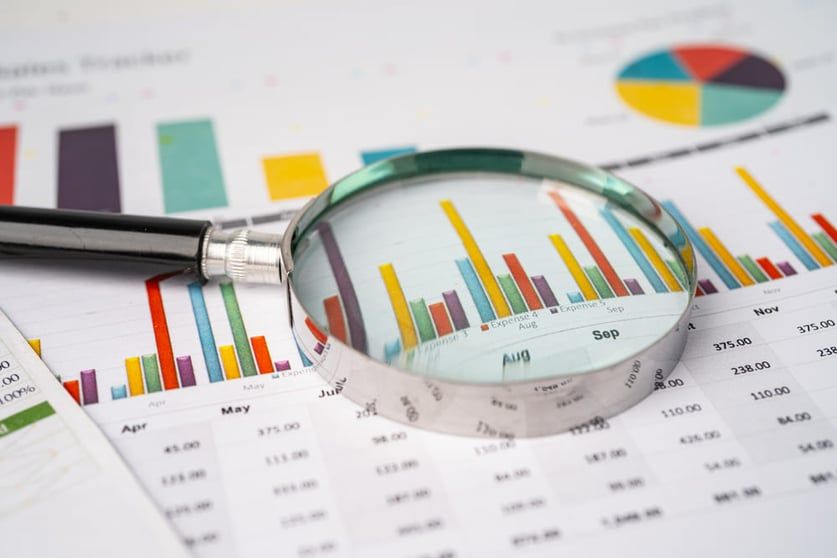
Summary: Are you using Google Analytics 4 for your business? We discuss what you need to track to measure ROI and how to access GA4 reports.
Have you started to set up your Google Analytics 4 (GA4) reports now that you are over the shock of losing a version of your favorite analytics tool and embracing GA4?
Does the reporting dashboard make you feel like an alien in a previously familiar world?
Don’t worry: you are not alone. And also—congratulations on being one step ahead by embracing GA4 before July 1, 2023, which is when Universal Analytics (UA) will stop processing data.
To help make the transition from UA to GA4 easier, we’re sharing tips on how to access reports in GA4 and what you need to make sure you’re tracking to measure your return on investment (ROI) and other key metrics in Google Analytics 4.
Check If Your Google Ads Account Is Affected
While this is not quite at the same level as a public service announcement, it’s important nonetheless—have you checked if your transition to GA4 has affected your Google Ads account(s)? If your UA version of Google Analytics and Google Ads accounts were previously linked, then you should migrate your Google Ads to link with Google Analytics 4.
Then, you’ll want to import your Google Analytics 4 conversions for bidding and/or add Google Analytics audiences to your campaigns or ad groups for remarketing purposes.
GA4 Reports
The reporting dashboard and reports in Google Analytics 4 are fundamentally changed. GA4 offers fewer predefined reports but gives users more opportunities to create their own reports based on their individual needs. No more trying to make your round data fit into a square report—you can now build reports that highlight exactly what you need.
In GA4, reports are categorized as Life Cycle and User reports, and you navigate to reports through the overview section and then click on a specific report widget.
What You Need To Track To Measure ROI
Google Analytics 4 uses data modeling and machine learning to gather information previously provided by browser cookies, so one can continue to report on campaign and website performance while respecting consumers’ privacy. GA4 unifies website and mobile app data into a single reporting view to measure user journeys and interactions across apps, devices, and websites as people move to conversion. In-platform metrics for non-Google products, such as shares and comments, must still be tracked on their platforms, but GA4 can track visits from these channels, mapping customer journeys across apps and websites.
Measuring return on investment (ROI) is vital to proving marketing campaigns have value and are working. There are several ways to calculate ROI, but the easiest way to do so in Google Analytics 4 (GA4) is by setting up conversions and adding a value to them. What is a conversion value? It is a monetary number assigned to the completion of an event in GA4 that allows you to quantify the monetary impact of every conversion and estimate your ROI.
Previously, conversions were measured by setting up goals and ecommerce transactions, but with GA4, all conversions are measured via events.
What do you need to do to track ROI using conversion values?
Set up conversion tracking. To track a sale or lead, you need to create a custom event and turn it into a conversion. You can do so in GA4 by creating a new event based on an existing option, or you can configure a new tag in Google Tag Manager.
Send cost data. Adding cost data lets you analyze your online ad campaign performance together with your conversation data to get a better understanding of your return on investment (ROI) and return on advertiser spend (ROAS). You need to set up data importing in GA4 to pull data from other advertising platforms.
Add values to conversions. Did you create a conversion using a predefined GA4 event? Adjust the configuration to include a value. If you track conversions for a service-based website, apply an estimated figure to your conversion events.
GA4 Reports ROI Tracking Challenges
Although Google Analytics 4 is a powerful tool to measure marketing performance, there are some ROI tracking challenges. The average lead-to-close length for B2B companies is 102 days, while in GA4, the maximum attribution window for acquisition conversion events is 30 days. Also, it currently does not track offline transactions, and conversion values are not dynamic.
Our expertise can help to measure your ROI and create customized GA4 reports based on your unique needs. Contact WSI today.
About the Author
Rick spent 20 years in the insurance industry in finance, primarily developing reporting platforms for B & C stakeholders. His ability to speak to consumers of data (managers and analysts) and translate their needs to programmers led him to start his own digital marketing agency in 2004 to develop data driven solutions for business owners.
The Best Digital Marketing Insight and Advice
We are committed to protecting your privacy. For more info, please review our Privacy and Cookie Policies. You may unsubscribe at any time.
Don’t stop the learning now!


